Related Research Articles
Quantum suicide is a thought experiment in quantum mechanics and the philosophy of physics. Purportedly, it can falsify any interpretation of quantum mechanics other than the Everett many-worlds interpretation by means of a variation of the Schrödinger's cat thought experiment, from the cat's point of view. Quantum immortality refers to the subjective experience of surviving quantum suicide. This concept is sometimes conjectured to be applicable to real-world causes of death as well.
In the criminal law of many nations, necessity may be either a possible justification or an exculpation for breaking the law. Defendants seeking to rely on this defense argue that they should not be held liable for their actions as a crime because their conduct was necessary to prevent some greater harm and when that conduct is not excused under some other more specific provision of law such as self defense. As a matter of political expediency, states usually allow some classes of person to be excused from liability when they are engaged in socially useful functions but intentionally cause injury, loss or damage.
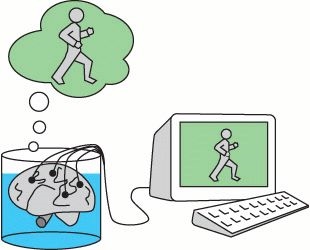
In philosophy, the brain in a vat (BIV) is a scenario used in a variety of thought experiments intended to draw out certain features of human conceptions of knowledge, reality, truth, mind, consciousness, and meaning. Originated by Gilbert Harman, Hilary Putnam turned the scenario into a modernized version of René Descartes's evil demon thought experiment. Following many science fiction stories, the scenario involves a mad scientist that might remove a person's brain from the body, suspend it in a vat of life-sustaining liquid, and connect its neurons by wires to a supercomputer that would provide it with electrical impulses identical to those a brain normally receives. According to such stories, the computer would then be simulating reality and the "disembodied" brain would continue to have perfectly normal conscious experiences, such as those of a person with an embodied brain, without these being related to objects or events in the real world. According to Putnam, the thought of "being a brain-in-a-vat" (BIV) is either false or meaningless. Considered a cornerstone of Semantic externalism, the argument produced significant literature. The Matrix franchise and other fictional works (below) are considered inspired by Putnam's argument.
The Ship of Theseus is a thought experiment about whether an object is the same object after having had all of its original components replaced.
In moral philosophy, deontological ethics or deontology is the normative ethical theory that the morality of an action should be based on whether that action itself is right or wrong under a series of rules and principles, rather than based on the consequences of the action. It is sometimes described as duty-, obligation-, or rule-based ethics. Deontological ethics is commonly contrasted to consequentialism, utilitarianism, virtue ethics, and pragmatic ethics. In this terminology, action is more important than the consequences.
Roderick Milton Chisholm was an American philosopher known for his work on epistemology, metaphysics, free will, value theory, and the philosophy of perception.

Carneades was a Greek philosopher, perhaps the most prominent head of the Skeptical Academy in ancient Greece. He was born in Cyrene. By the year 159 BC, he had begun to attack many previous dogmatic doctrines, especially Stoicism and even the Epicureans, whom previous skeptics had spared.
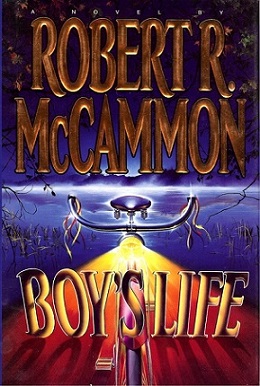
Boy's Life is a 1991 novel by New York Times bestselling author Robert R. McCammon. It received the World Fantasy Award for Best Novel in 1992.

Margaret Garner, called "Peggy", was an enslaved African-American woman in pre-Civil War America who killed her own daughter rather than allow the child to be returned to slavery. Garner and her family had escaped enslavement in January 1856 by traveling across the frozen Ohio River to Cincinnati, but they were apprehended by U.S. Marshals acting under the Fugitive Slave Act of 1850. Garner's defense attorney, John Jolliffe, moved to have her tried for murder in Ohio, to be able to get a trial in a free state and to challenge the Fugitive Slave Law. Garner's story was the inspiration for the novel Beloved (1987) by Nobel Prize-winning author Toni Morrison and its subsequent adaptation into a film of the same name starring Oprah Winfrey (1998).
Clitomachus or Cleitomachus was a Greek philosopher, originally from Carthage, who came to Athens in 163/2 BC and studied philosophy under Carneades. He became head of the Academy around 127/6 BC. He was an Academic skeptic like his master. Nothing survives of his writings, which were dedicated to making known the views of Carneades, but Cicero made use of them for some of his works.

Bad Influence is a 1990 American psychological thriller film directed by Curtis Hanson starring Rob Lowe and James Spader. In this noirish film, Spader plays a yuppie who meets a mysterious stranger (Lowe) who encourages him to explore his dark side. Bad Influence was the first original screenplay for which David Koepp received a sole screenplay credit.

Funny Games is a 1997 Austrian psychological horror film written and directed by Michael Haneke, and starring Susanne Lothar, Ulrich Mühe, and Arno Frisch. The plot involves two young men who hold a family hostage and torture them with sadistic games in their vacation home. The film was entered into the 1997 Cannes Film Festival. A shot-for-shot remake, filmed and set in the United States, was released in 2007, also directed by Haneke, this time with an English-speaking cast and a mostly American crew.
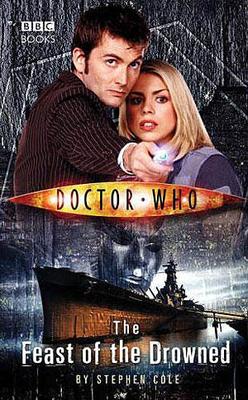
The Feast of the Drowned is a BBC Books original novel written by Stephen Cole and based on the long-running British science fiction television series Doctor Who. It was published on 13 April 2006, alongside The Stone Rose and The Resurrection Casket. It features the Tenth Doctor, Rose and Mickey.

"The Case of the Speluncean Explorers" is an article by legal philosopher Lon L. Fuller first published in the Harvard Law Review in 1949. Largely taking the form of a fictional judgment, it presents a legal philosophy puzzle to the reader and five possible solutions in the form of judicial opinions that are attributed to judges sitting on the fictional "Supreme Court of Newgarth" in the year 4300.
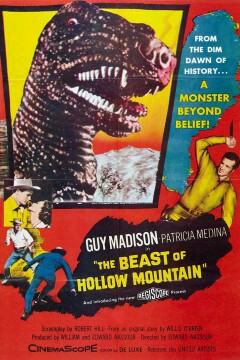
The Beast of Hollow Mountain is a 1956 Weird West horror film about an American rancher living in Mexico who discovers that his missing cattle are being preyed upon by a dinosaur.
In the field of criminal law, there are a variety of conditions that will tend to negate elements of a crime, known as defenses. The label may be apt in jurisdictions where the accused may be assigned some burden before a tribunal. However, in many jurisdictions, the entire burden to prove a crime is on the prosecution, which also must prove the absence of these defenses, where implicated. In other words, in many jurisdictions the absence of these so-called defenses is treated as an element of the crime. So-called defenses may provide partial or total refuge from punishment.

SS John B. Cowle was one of the early Great Lakes bulk freighters known as "tin pans". She was the first of two ships named for prominent Cleveland, Ohio citizen and shipbuilder John Beswick Cowle. In 1909 on her maiden voyage SS Isaac M. Scott rammed John B. Cowle in heavy fog off Whitefish Point. John B. Cowle sank in three minutes, taking 14 of her 24-man crew with her. Artifacts from her wreck were illegally removed in the 1980s. Her artifacts are now the property of the State of Michigan and are on display as a loan to the Great Lakes Shipwreck Museum. The wreck of John B. Cowle is protected as part of an underwater museum in the Whitefish Point Underwater Preserve.
Linda Andersen was the victim of premeditated murder by her two teenage daughters on January 18, 2003, in Mississauga, Ontario. Since both daughters were under the age of 18 at the time of the murder, their identities are protected under the Youth Criminal Justice Act, a Canadian law. The names Linda Andersen, as well as sisters Sandra and Elizabeth (Beth) Andersen, are aliases created by journalist Bob Mitchell, in an effort to protect the girl's identities in the book he wrote about their mother's murder. The book is The Class Project: How to Kill a Mother: The True Story of Canada's Infamous Bathtub Girls. The sisters are also commonly referred to as the "Bathtub Girls" due to their drowning their mother in a bathtub.
The 1973 Hanafi Muslim massacre took place on January 18, 1973. Two men and a boy were shot to death. Four other children ranging in age from nine days to ten years old were drowned. Two others were severely injured. The murders took place at 7700 16th Street NW, a Washington, D.C. house purchased for a group of Hanafi Muslims to use as the "Hanafi American Mussulman's Rifle and Pistol Club". The property was purchased and donated by then Milwaukee Bucks basketball player Kareem Abdul-Jabbar.
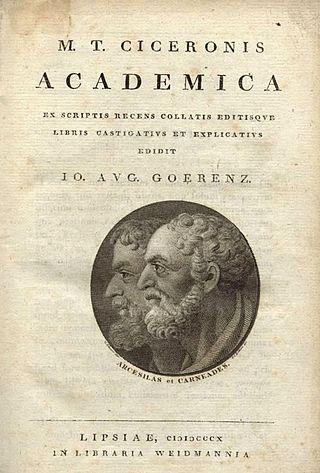
The Academica is work in a fragmentary state written by the Academic Skeptic philosopher, Cicero, published in two editions. The first edition is referred to as the Academica Priora. It was released in May 45 BCE and comprised two books, known as the Catulus and the Lucullus. The Catulus has been lost. Cicero subsequently extensively revised and expanded the work, releasing a second edition comprising four books. Except for part of Book 1 and 36 fragments, all of the second edition has been lost. The second edition is referred to as Academica Posteriora or Academici Libri or Varro.
References
- Cicero, De officiis 3.89.
- Lactantius, Divinae institutiones 16.10.